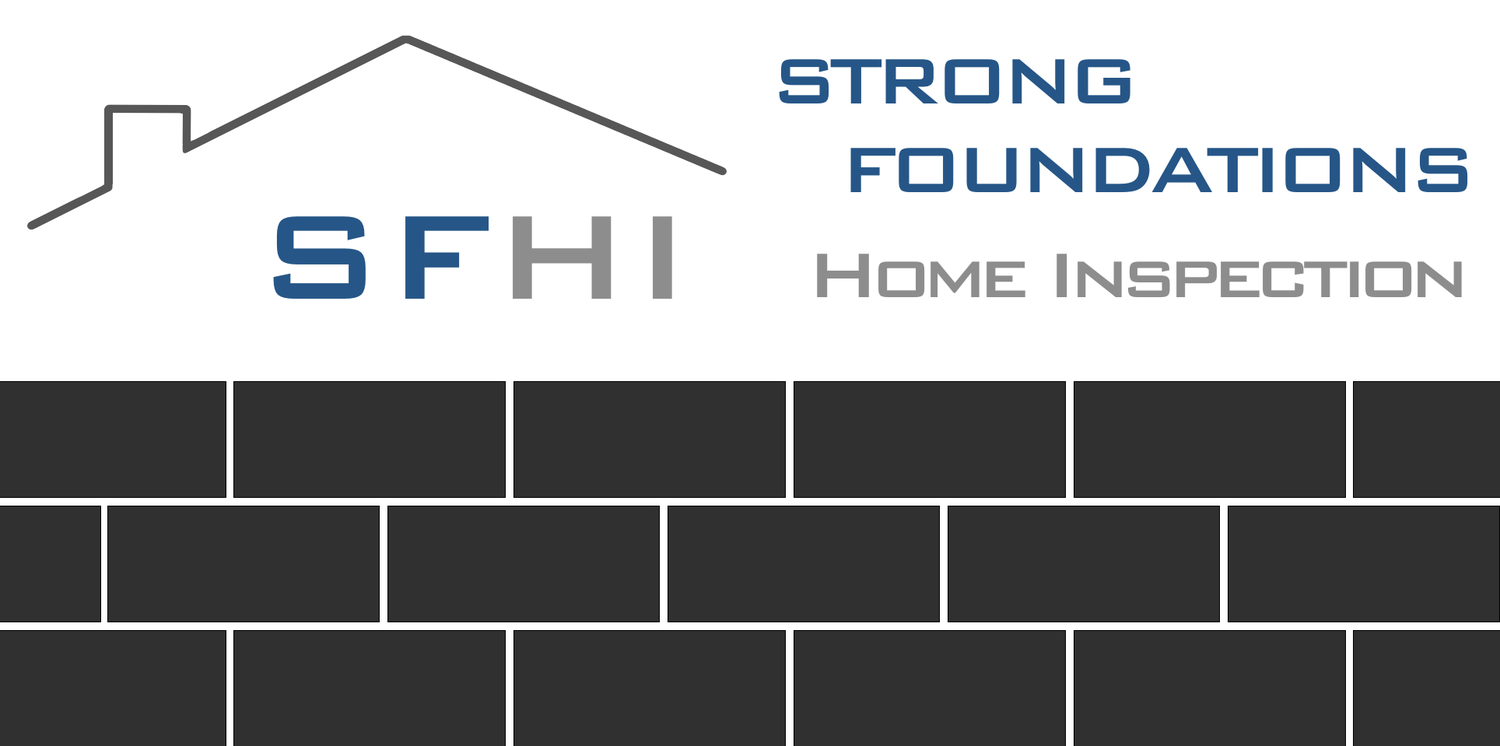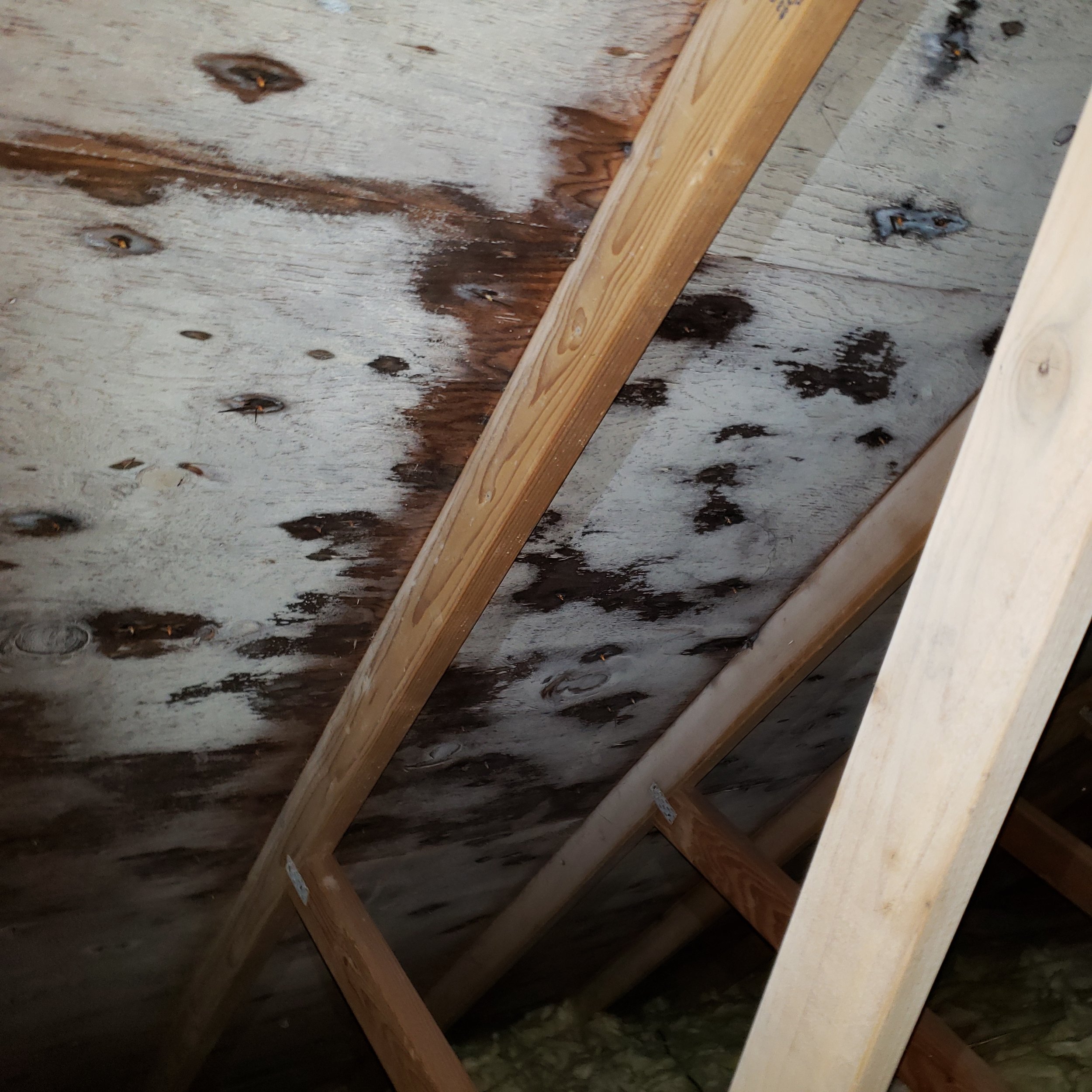Here’s an example of a once simple problem with a once simple solution that has turned into an absolute disaster. A cautionary tale.
Read moreEpisode 2: Don't Ignore Your Attic
It may come as a shock to the average homeowner, but home inspectors actually find mold issues in most attics - especially in the Pacific Northwest. This is not a rare issue - it is almost more surprising when an attic is completely mold-free. Though we don’t actually perform tests to confirm the presence of mold, there are some distinctive signs that we look for, such as dark or white spotting on the attic sheathing or framing, as well as rusted nail heads or other indicators of excess moisture.
Now, for the most part attic mold issues tend to be fairly minor. When discovered, we always recommend further testing and evaluation (and remediation, if necessary), and often we will hear back from our clients that, even when the presence of mold is verified, the issue is minor enough that no immediate action is warranted. After all, there is very little evidence that minor mold growth in an attic has any ill-effect on the health or safety of the home’s occupants. It is a nuisance (and it is a good indicator of other issues, such as improper ventilation), but it is no reason to panic. Usually.
Then there are the more extreme cases, such as this one:
The pictures hardly do justice to the situation. The attic was absolutely filled with mold. It was growing on every surface - the sheathing, the trusses and all over the insulation. In some places it was thick, with full fungal growth (mushrooms), indicating what seemed to me to be a total failure of the roof’s structural system. But it could have been avoided.
This was a 1980’s split-level home that, until the moment I stuck my head into the attic, seemed almost perfect. Well maintained and upgraded, with immaculate attention to detail throughout, I was very optimistic about the overall condition of the home. But the homeowner had never looked into the attic, and the problems originated from the very moment the house was built.
The builder had installed the insulation incorrectly, and the fiberglass batts were blocking the vent holes under the soffits. That’s it - that one little mistake, combined with three decades of hot and cold cycles, had very nearly destroyed this house. But if the homeowner had taken the time to peek up into their attic and shine a flashlight around every now and again, it might have been avoided or caught much earlier.
Here’s another recent example:
This was yet another split-level property. In this case, the roof had been replaced just a few years prior to the inspection, and the roofer had done a great job installing a ridge vent to allow maximum air flow in the attic space. Unfortunately, ridge vents do little good when the vents all along the soffits (under the eaves) were packed full of insulation, blocking all air flow. Unfortunately, the end result is fairly predictable: Hot, moist air collects in the attic and leads to issues like those above. No fun.
The moral of this story is easy: Don’t let those tough-to-get-to places like attics and crawlspaces go too long without an inspection. You never know what might be growing right under (or over) your nose.
But I want to repeat: These are somewhat extreme cases, and mold in the attic, in many circumstances, is both common and not a major concern. However, it is indicative of a number of issues that CAN BECOME major concerns down the road.
For some more information I would recommend reading through the information provided here (from Environix - a local remediation company):
https://www.environix.com/mold/learning/attic-mold/
Episode 1: Never Pressure Wash a Roof
Got moss problems on your roof, or is it just plain dirty? Do you want to clean it up in order to get top dollar when you get around to selling?
Then, by all means, clean the moss off. BUT DON’T PRESSURE WASH YOUR ROOF!
Even on a low pressure setting, pressure washers are notorious for destroying roof shingles. I tell my clients this all the time, and I’m sure most take my advice seriously, but I’m sure there are some who think that I’m exaggerating.
The roof below was just a few years old, and the seller decided to clean it up a little before putting the house on the market. This is a roof that is severely damaged and needs to be replaced - a simple pressure wash turns into mistake that will cost THOUSANDS of dollars to repair. Don’t do it!
In fact, don’t use any methods of roof cleaning that apply force to the roof surface - this includes using brooms or other tools.
Chemical cleaners are the way to go to kill moss (and, for the eco-conscious among you, there are plenty of solutions, including baking soda).
You’ve been warned.
What Not to Do: An Introduction
We’re always giving advice to our clients. Do this, don’t do that, remember this… Sometimes these items are minor, sometimes they are crucial. But we want to make sure that you know that when we say these things to you we aren’t just “blowing smoke”. We’ve got good reasons for the advice we give and the errors we point out, and we hope that this section can provide some visual proof as to why we say what we say.







